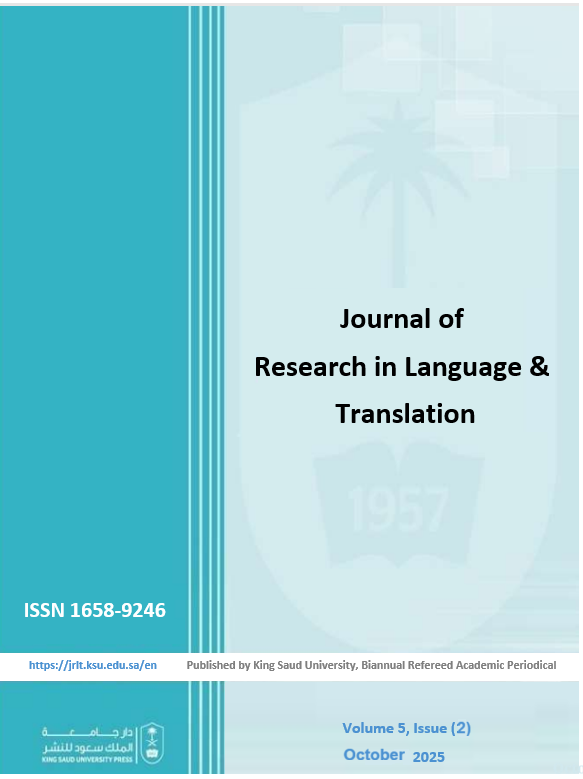The Representation of Children in Saudi Arabic Media: A Corpus-Based Critical Discourse Analysis
DOI:
https://doi.org/10.33948/JRLT-KSU-5-2-6Keywords:
children representation, corpus, critical discourse analysis, media discourseAbstract
Previous investigations of media discourse worldwide have repeatedly identified the underrepresentation and misrepresentation of children in news reporting. However, Arabic-language outlets remain largely unexplored. As such, this study analyzed more than 59 million words from Saudi print media—including newspapers and news agencies—over a ten-year span (2009–2019) to explore the portrayal of children in media discourse. The quantitative data included frequencies, collocations, concordances, and contexts. Further qualitative analysis was conducted within Critical Discourse Analysis (CDA) and the Social Actors Approach (SAA). The collocates of the keyword child were extracted and the results showed that most collocates serve the identification function, followed closely by functionalization, which indicates their roles. We found that children in Saudi media were predominantly portrayed in the role of victims, followed by being the objects of emotional appeal. This representation may have contributed to diminishing children's agency, potentially silencing their voices in the media discourse. Moreover, the majority of topics found in the categorization of themes were related to accidents, war, and violence. The concordances within topics of healthcare and education similarly reveal focus on children being objects of emotional appeal. The findings also indicate that descriptions of beauty and innocence collocate with the feminine suffix for female children only, which indicates cultural evaluation. These findings corroborate results from other countries. Therefore, we advocate for a nuanced media discourse portrayal that acknowledges children's diverse capabilities and roles beyond their vulnerability.

